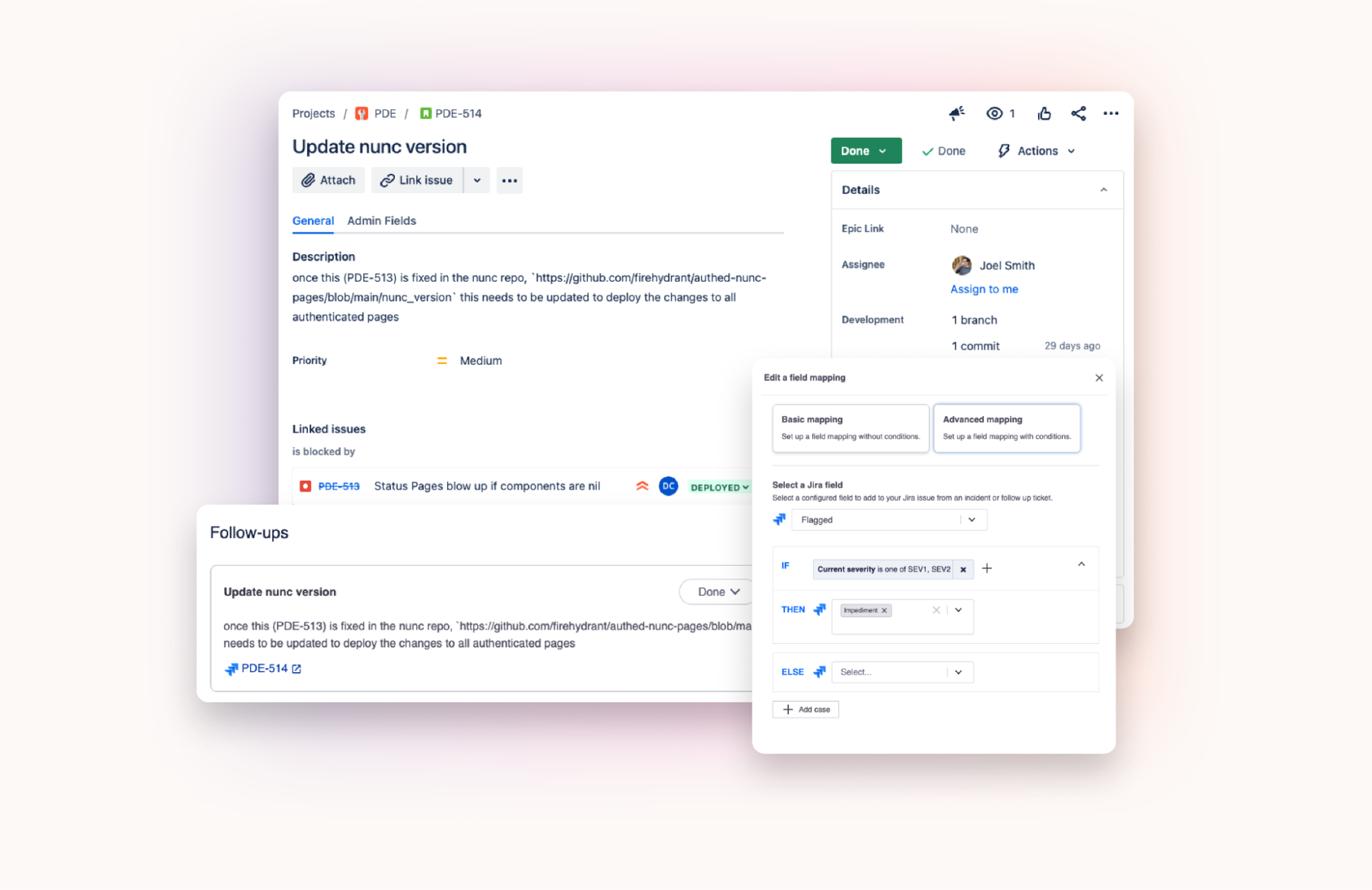
For you folks who use Jira, it’s probably the source of truth of, well, everything that’s being worked on within your product and engineering organization. From compliance to actually doing work, Jira is a core part of getting anything done, including responding to incidents and making sure those pesky follow ups get done post incident. If your org uses Jira, we have good news for you, because today, we’re announcing some improvements to our Jira integration.
Bidirectional Sync#bidirectional-sync
Most teams that are using Jira and FireHydrant create a ticket in Jira via hydrant that serves as the hub for subtasks, related tickets, and others, usually automated through a Runbook step. However, once that Jira ticket was created, FireHydrant and Jira could sometimes have different representations of the state of that ticket, depending on the last updated system. Now, whenever any standard fields of that ticket are updated (summary, description, and labels), those fields will update in both Jira and FireHydrant. The work doesn’t end there either - we’re working on expanding the fields that will be synced across Jira and FireHydrant (specifically priority and assignee) and will keep you updated as those items launch.
Improved Field Mapping Experience#improved-field-mapping-experience
Anyone who’s set up Field mapping between Jira and FireHydrant (or hopefully by now, Asana and FireHydrant) know that mapping fields between the two systems can be a little painful, especially when there’s conditional logic on what the value of that field should be. Fortunately, our design team got ahold of the UI, and have made it significantly easier to understand which fields in your ticketing system are mapped to FireHydrant custom fields, and under what conditions will a particular value will be set. FireHydrant will continue to “own” the field in Jira, so there are no behavioral changes here, just increased ease of use!
To learn more about the Jira Integration in FireHydrant, try it out by going to Settings > Integration List > Jira and clicking the edit icon. From there, you can re-authorize the connection to setup bi-directional syncing (we'll update our connection to give FireHydrant the "manage:jira-webhook" scope). You can also checkout the newest version of field mapping in the new "Field Mapping" tab to update your existing field mappings.